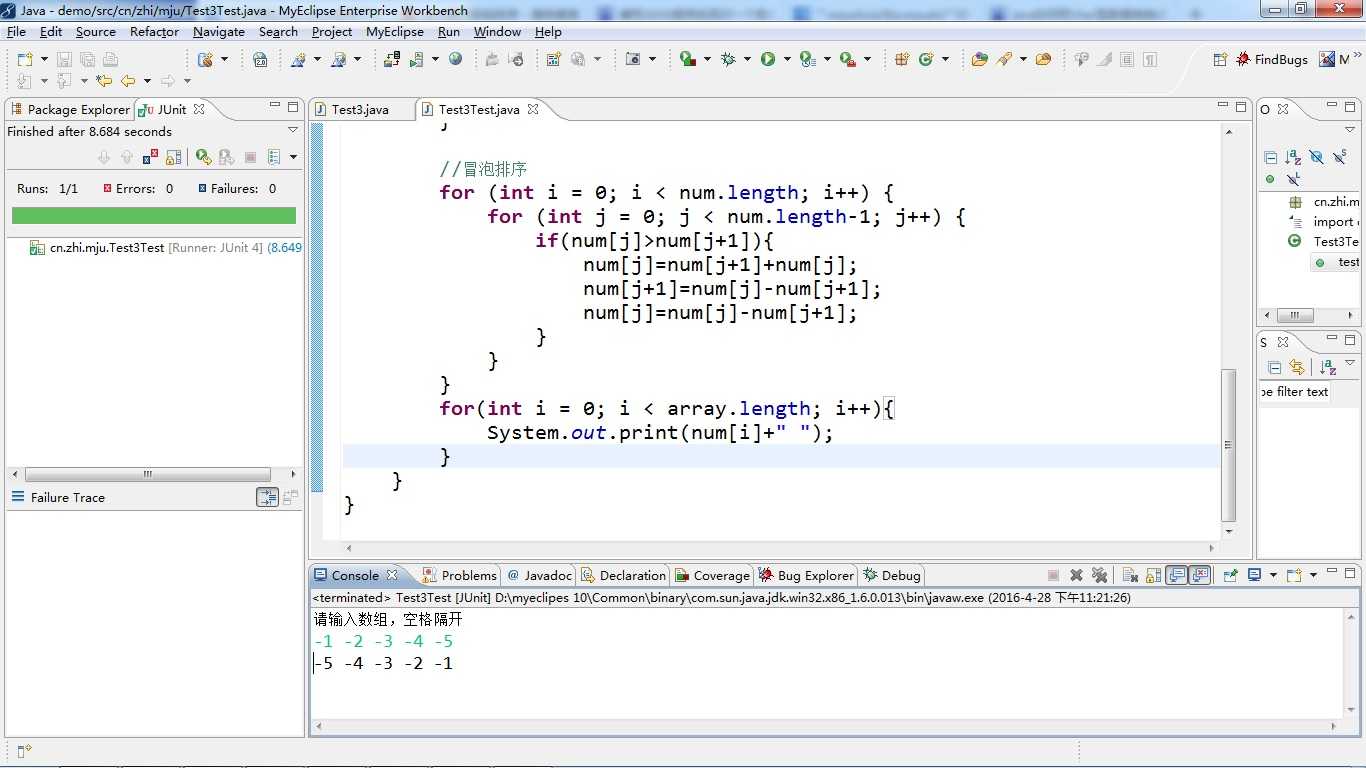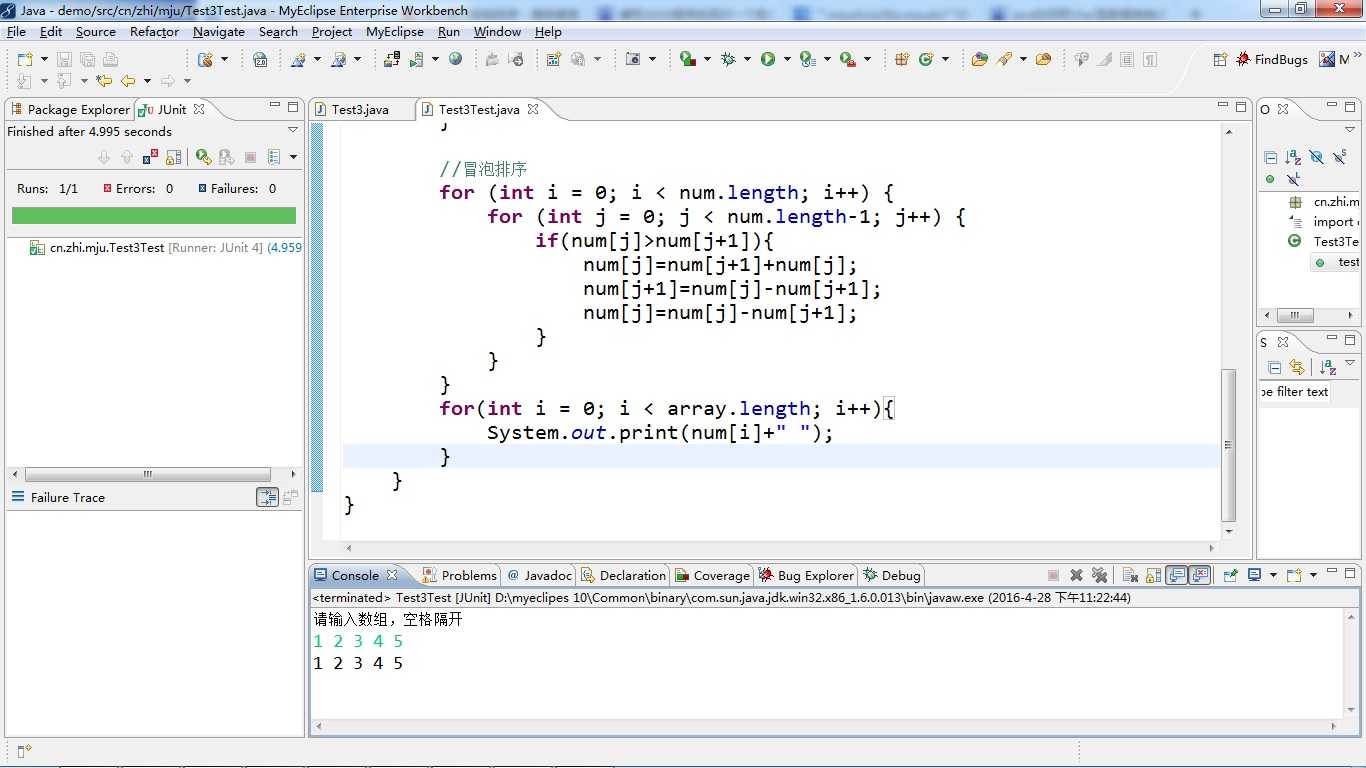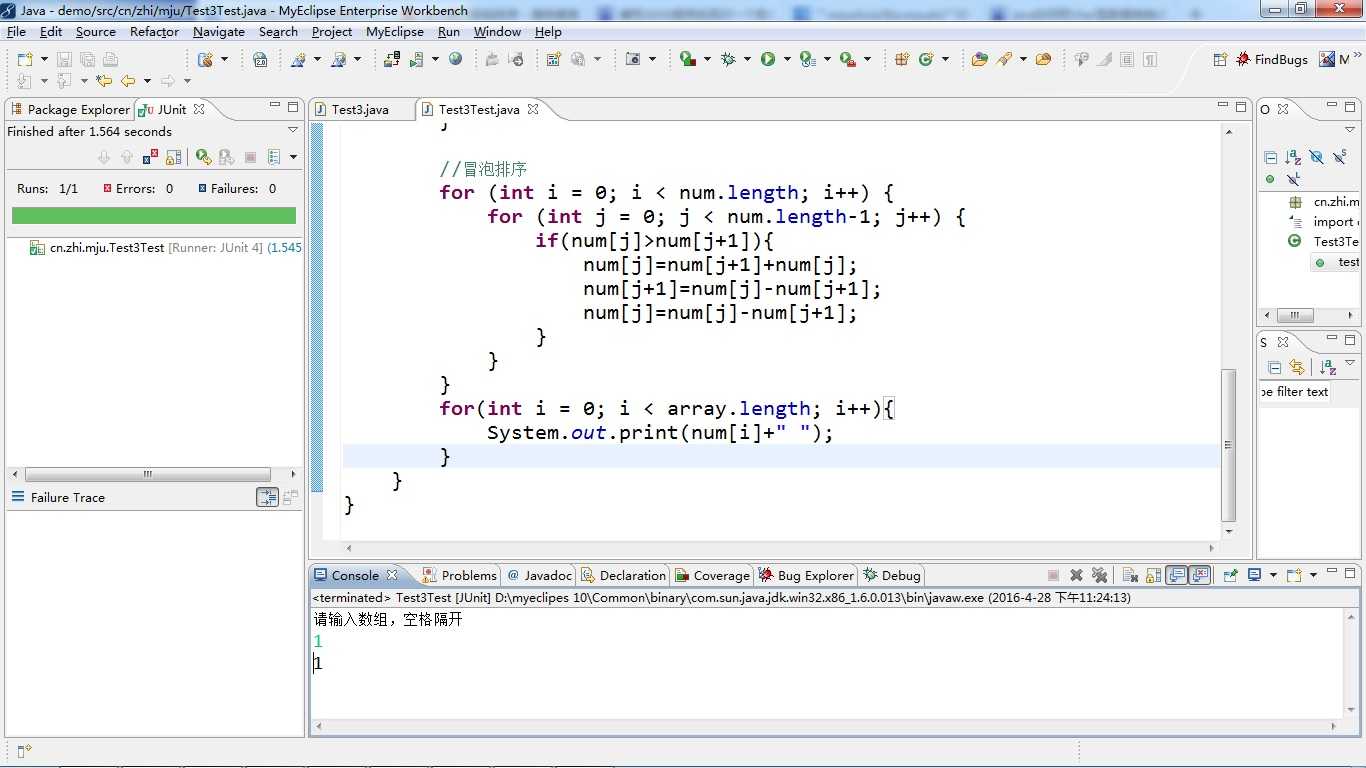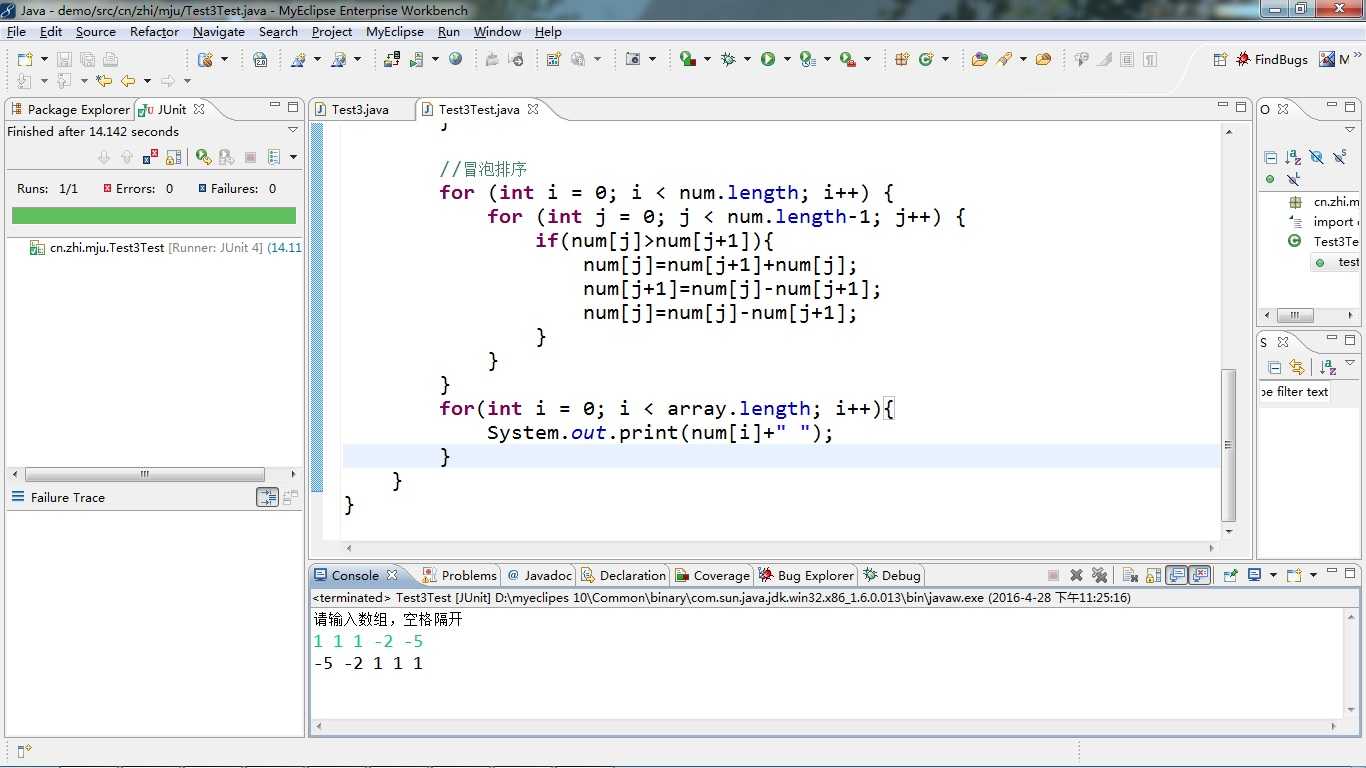标签:
1、 某网站管理系统,用户注册时,电话号码为可选输入项,输入格式为:区号-电话号码—分机号,中间用“-”隔开。以下为jsp页面上的设计,且并未对输入做任何控制。

假设系统现在需要取出中间的电话号码部分,代码如下:
/** * * 该方法根据用户输入取出中间的电话号码部分 * @param strPhoneNum 电话号码,如:“0591-83279988—002” * @return 返回号码部分,如:“83279988” */ public String getPhoneNumber(String strPhoneNum){ if((strPhoneNum==null) || "".equals(strPhoneNum)){ return ""; } String[] arrPhone=strPhoneNum.split("-"); return arrPhone[1]; }
请用你学过的测试技术和方法,找出该方法中存在的问题,并且分析出现该问题的原因,同时给出你的解决方案。(提示:存在的问题不止一个)
要求:
(1) 写出问题所在
(2) 写出问题产生的原因
(3) 给出修改后的代码
答:(1)问题:输入格式没有严格限制。
(2)原因:代码没有实现对输入的出错处理。
(3)修改后代码:
public static String getPhoneNumber(String strPhoneNum){
if((strPhoneNum==null) || "".equals(strPhoneNum)){
return "";
}
String[] arrPhone=strPhoneNum.split("-");
//对输入格式和字符规定格式
for(int i = 0;i<strPhoneNum.length();i++){
try{
if(arrPhone.length!=3){
int n =10/0;
}
if(strPhoneNum.charAt(i)!=‘-‘){
Integer.parseInt(String.valueOf(strPhoneNum.charAt(i)));
}else if(strPhoneNum.charAt(i+1)==‘-‘){}
}catch(Exception e){
System.out.println("输入含非法字符或输入格式不正确!");
arrPhone[1]="";
break;
}
}
return arrPhone[1];
}
2、 请写一段用于整型数组排序的代码,说明你的设计思路,并利用错误推测法给出可能出错的情况(至少5种),设计出测试用例,并利用JUnit编写单元测试进行测试。(假设传入的参数已经确定为整型数组)
要求:
(1) 写出代码,并符合代码规范(命名要规范,不可直接写在main方法中,需要有类注释、方法注释、以及适当的行注释)
(2) 说明你的设计思路
(3) 写出可能出错的情况(至少五种)
(4) 编写JUnit单元测试,将前面给出的可能出错的测试数据放入单元测试进行测试
答:(1)
package cn.zhi.mju;
/**
* 整形数组排序
* @author 陈雅智
* 更新时间:2016/4/28
*/
import java.util.Scanner;
public class Test3 {
/**
* @param args
*/
public static void main(String[] args) {
// TODO Auto-generated method stub
Test3 test3 = new Test3();
test3.pr();
}
public void pr(){
Scanner in = new Scanner(System.in);
System.out.println("请输入数组,空格隔开");
String str = in.nextLine();
//首字符是空格或TAB删除首字符
for(int i = 0; i <str.length(); i++){
if(str.charAt(0)==‘ ‘||str.charAt(0)==‘ ‘){
str=str.substring(1);
}
}
//假设传入的参数已经确定为整型数组,转换成整形数组
String[] array = str.split(" ");
int[] num = new int[array.length];
for(int i = 0; i < array.length; i++){
num[i] = Integer.parseInt(array[i]);
}
set(num);
for(int i = 0; i < array.length; i++){
System.out.print(num[i]+" ");
}
}
//冒泡排序
public void set(int[] num) {
for (int i = 0; i < num.length; i++) {
for (int j = 0; j < num.length-1; j++) {
if(num[j]>num[j+1]){
num[j]=num[j+1]+num[j];
num[j+1]=num[j]-num[j+1];
num[j]=num[j]-num[j+1];
}
}
}
}
}
(2)采用冒泡排序进行数组排序,从小到大输出。
(3)
①负整数排序:-1 -2 -3 -4 -5
②正数排序:1 2 3 4 5
③正负数混合排序:-1 2 -3 4 -5
④单个数:1
⑤有同大小的数:1 1 1 -2 5
(4)
package cn.zhi.mju;
import java.util.Scanner;
import org.junit.Test;
public class Test3Test {
@Test
public void test() {
Scanner in = new Scanner(System.in);
System.out.println("请输入数组,空格隔开");
String str = in.nextLine();
//首字符是空格或TAB删除首字符
for(int i = 0; i <str.length(); i++){
if(str.charAt(0)==‘ ‘||str.charAt(0)==‘ ‘){
str=str.substring(1);
}
}
//假设传入的参数已经确定为整型数组,转换成整形数组
String[] array = str.split(" ");
int[] num = new int[array.length];
for(int i = 0; i < array.length; i++){
num[i] = Integer.parseInt(array[i]);
}
//冒泡排序
for (int i = 0; i < num.length; i++) {
for (int j = 0; j < num.length-1; j++) {
if(num[j]>num[j+1]){
num[j]=num[j+1]+num[j];
num[j+1]=num[j]-num[j+1];
num[j]=num[j]-num[j+1];
}
}
}
for(int i = 0; i < array.length; i++){
System.out.print(num[i]+" ");
}
}
}





闽江学院2015-2016学年下学期《软件测试》课程-第三次博客作业
标签:
原文地址:http://www.cnblogs.com/wowanyasuo/p/5444683.html